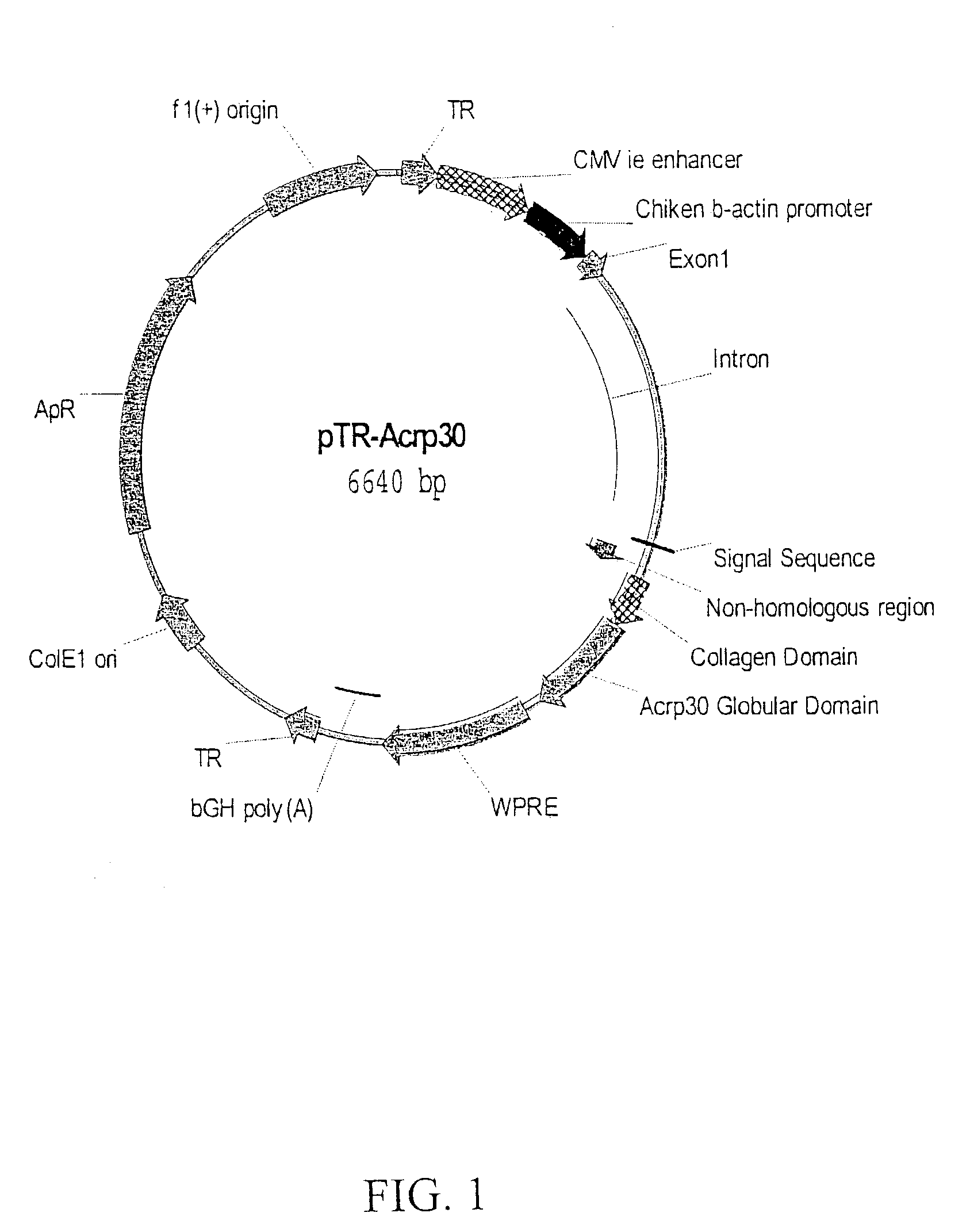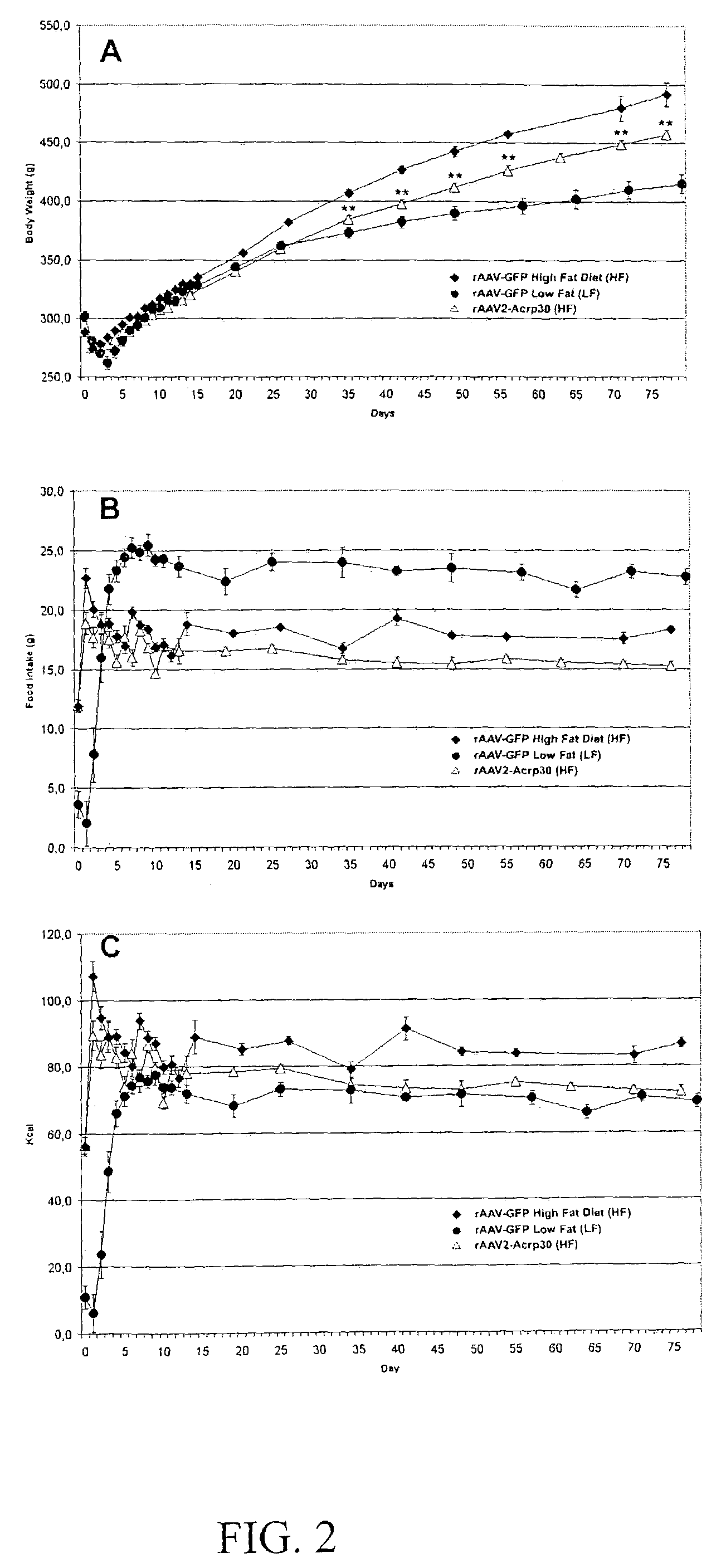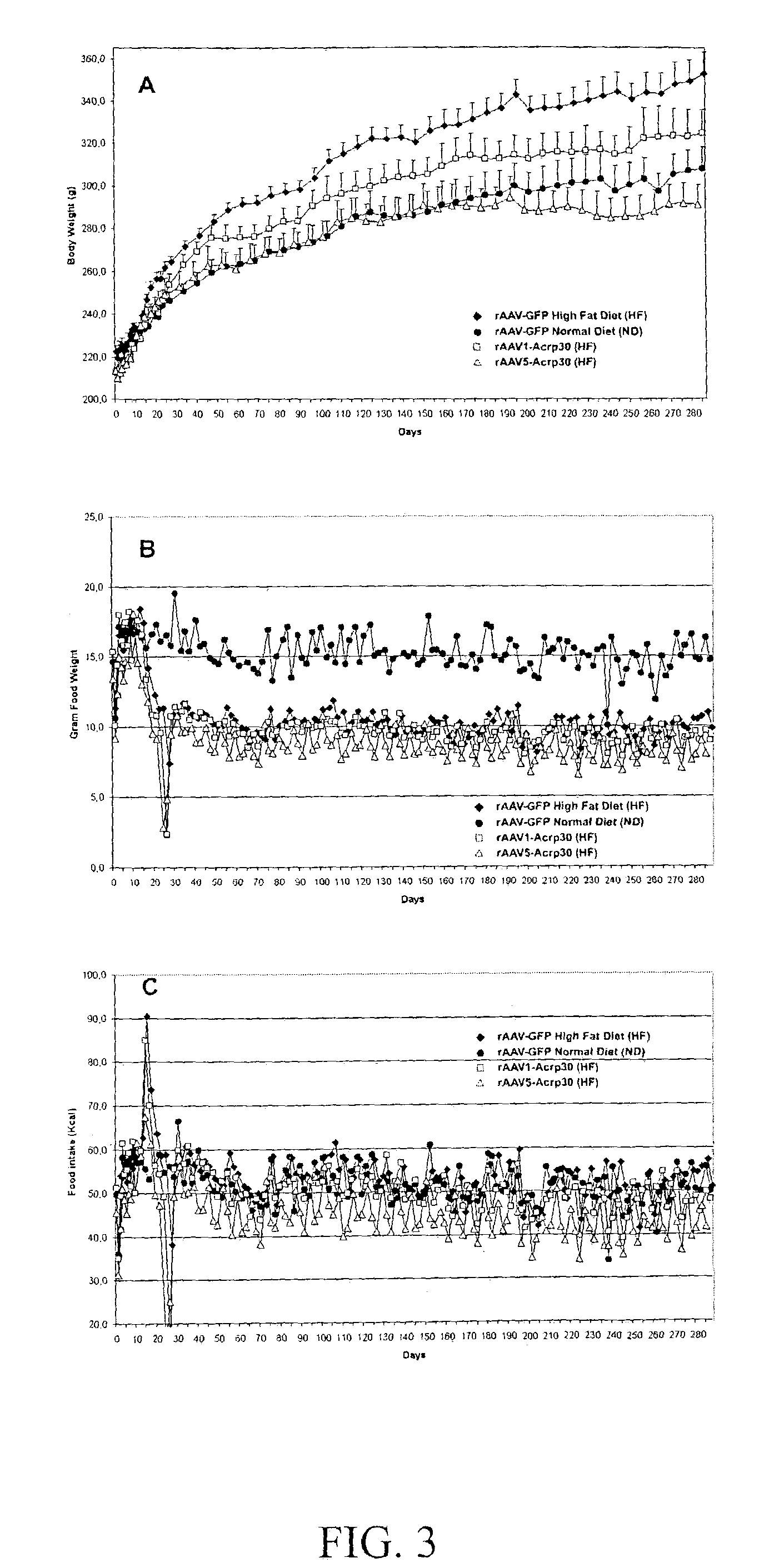Adiponectin gene therapy
a gene therapy and adiponectin technology, applied in the field of endocrinology, biology, gene therapy, can solve the problems of incomplete understanding of the biological mechanisms underlying this relationship, and achieve the effects of reducing appetite, increasing insulin sensitivity, and reducing body weight gain
- Summary
- Abstract
- Description
- Claims
- Application Information
AI Technical Summary
Benefits of technology
Problems solved by technology
Method used
Image
Examples
example 1
Materials and Methods
[0067]Construction of pTR-Acrp30. cDNA coding for mouse adiponectin was obtained by reverse transcriptase PCR (RT-PCR)-mediated cloning using total RNA isolated from white adipose tissue (WAT). Upon sequence verification, the adiponectin cDNA was subcloned into an AAV2 transfer vector derived from pTR-UF2 (Zolotukhin et al., J Virol, 70:4646–54, 1996). The resulting plasmid, pTR-Acrp30 (FIG. 1) was subsequently used to package the adiponectin cassette.
[0068]FIG. 1 depicts pTR-Acrp30. The sequences featured on the plasmid map of pTR-Acrp30 are as follows: TR is the AAV2 terminal repeat sequence; CBA promoter includes the CMV intermediate early enhancer sequence, the chicken β-actin promoter, non-coding sequence (Exon 1) and intron from rabbit β-globin gene; the full-length mouse Acrp30 gene includes sequences coding for an endogenous signal peptide, non-homologous sequence, collagen domain peptide and active globular domain; WPRE is the woodchuck hepatitis virus ...
example 2
Modulation of Body Weight by Cytokine Vectors and Changes in Hypothalamic Gene Expression in rAAV-treated Rats
[0072]A conceptual approach for a systemic, targeted alteration of metabolic pathways leading to a sustained loss of WAT in normal SD rats was undertaken. This study involved a central (intracerebroventricular, icv) administration of rAAV encoding either a lipostatic hormone, leptin, or anorexigenic cytokines of the IL6 family (CNTF and LIF). The respective ligands encoded by leptin, CNTF or LIF transgenes induced similar but not identical physiological responses as assessed by the reduction in body weight gain and changes in food intake. Sustained ectopic expression of rAAV-mediated transgenes resulted in either mild (CNTF) or severe (leptin and LIF) anorexia. This anorexia was not associated with long-term significant changes in caloric intake in the cases of CNTF and LIF.
[0073]Two distinct phases in response to transgenes were documented: 1) onset of phenotypic changes of...
example 3
Downregulation of Adiponectin Gene in Aging Rats
[0081]cDNA for the mouse adipocyte hormone adiponectin was cloned using a PCR-mediated protocol. This cDNA was labeled with 32P and was used as a probe in a Northern blot. Three distinct species of adiponectin-specific transcripts in rat adipocytes were detected. These mRNAs may encode the same or slightly different proteins. Adiponectin mRNA was reduced by greater than 40% in perirenal WAT (100±6.7 at 6 months vs. 59.4±4.5 at 30 months, p=0.001, N=6) and by 25% in retroperitoneal WAT (100±4.9 at 3 months vs. 76.1±3.8 at 24 months, p=0.0002, N=7) in the aged rat model.
PUM
| Property | Measurement | Unit |
|---|---|---|
| temperature | aaaaa | aaaaa |
| nucleic acid sequence | aaaaa | aaaaa |
| weight gain | aaaaa | aaaaa |
Abstract
Description
Claims
Application Information
 Login to View More
Login to View More - R&D
- Intellectual Property
- Life Sciences
- Materials
- Tech Scout
- Unparalleled Data Quality
- Higher Quality Content
- 60% Fewer Hallucinations
Browse by: Latest US Patents, China's latest patents, Technical Efficacy Thesaurus, Application Domain, Technology Topic, Popular Technical Reports.
© 2025 PatSnap. All rights reserved.Legal|Privacy policy|Modern Slavery Act Transparency Statement|Sitemap|About US| Contact US: help@patsnap.com



